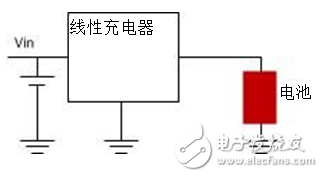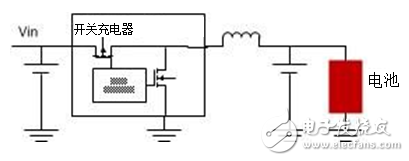
Privacy statement: Your privacy is very important to Us. Our company promises not to disclose your personal information to any external company with out your explicit permission.
![]() June 24, 2019
June 24, 2019
Linear Battery Charger and switch Adapter Charger are used in a variety of applications: hearing aids, smart watches, sensor nodes, cell phones, laptops...numerable! A Li-ion Battery Charger is required whenever a rechargeable battery is used. However, considering the pros and cons of the different charging topologies available, you may need to consider more factors when choosing a charger.
Each method has its pros and cons. Linear chargers are small, easy to use, and low cost. They can be used in noise-sensitive applications without any switching; however, when the charging current is large, the power consumption is high. Figure 1 shows a schematic of a linear charger.
Switching chargers are known for their high efficiency and can minimize power consumption over a wide range of input adapter voltages. However, additional inductors and capacitors consume more board space than linear chargers, adding BOM cost and design complexity. Figure 2 shows a diagram of the switch charger. Table 1 compares the functions of the two charger types.

Figure 1: Linear Charger Diagram

Figure 2: Switching Charger Diagram
Linear charger
Switch charger
Large power consumption and large charging current
Higher efficiency and lower power consumption
Simple design; small solution size
More complex design
cut costs
More components; this higher
No electromagnetic interference (EMI) problem
Switching noise may require more layout considerations
Suitable for charging small batteries or batteries with <1.5A charging current
Suitable for large capacity batteries and fast charging
Which charger to choose will depend on which factors in Table 1 are most important for a particular design. Typically, linear chargers are preferred due to small solution size, simple design and low cost (such as bq25120), small batteries and low charging current applications such as wearable devices, Internet of Things (IoT) and the like. Some backup battery applications, such as emergency calls and car GPS location trackers, are also more preferred as linear chargers for the bq24081-Q1. High-power and multi-cell battery applications such as smartphones, tablets and laptops will use switching chargers such as the bq24170.
These chargers are custom designed to support different battery chemistries such as lithium ion, lithium polymer, LiFePO4, NiMH, lead acid, and more. Lithium-ion batteries are commonly used in consumer and industrial applications due to high energy density, low maintenance frequency, and low self-discharge characteristics. Due to stability and reliability characteristics, LiFePO4 and NiMH are often found in automotive applications.
The above is the What is the difference between a linear charger and a switch charger? Which one should I choose? we have listed for you. You can submit the following form to obtain more industry information we provide for you.
You can visit our website or contact us, and we will provide the latest consultation and solutions
Send Inquiry
Most Popular
lastest New
Send Inquiry

Privacy statement: Your privacy is very important to Us. Our company promises not to disclose your personal information to any external company with out your explicit permission.

Fill in more information so that we can get in touch with you faster
Privacy statement: Your privacy is very important to Us. Our company promises not to disclose your personal information to any external company with out your explicit permission.